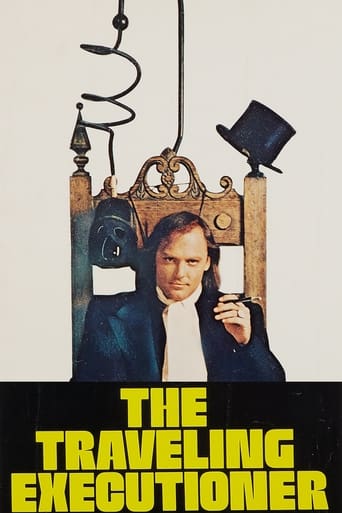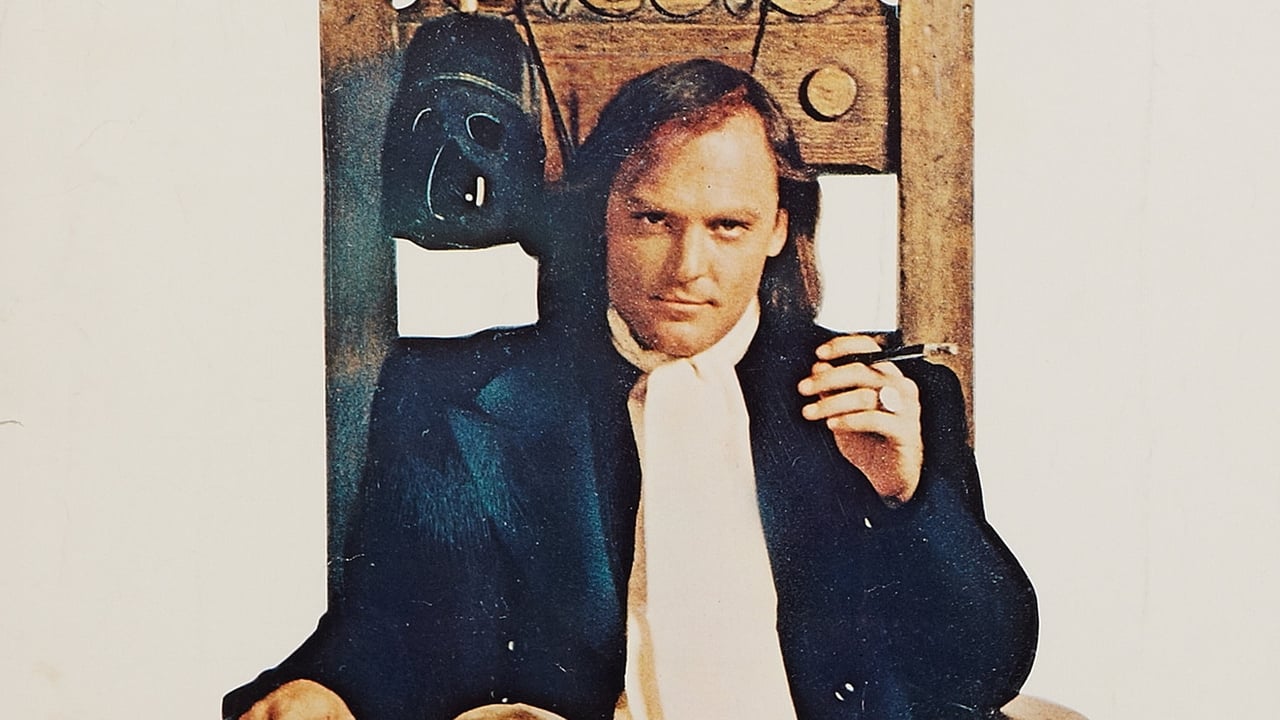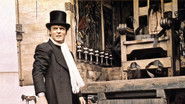Alex da Silva
and the Lord taketh away. Stacy Keach (Jonas) is the good-natured psychopath who travels around America in his van performing an usual ceremony. He's the travelling executioner and transports his own electric chair around with him to each gig. He straps in the victim, provides a kindly speech and then flicks the switch. Then, it's a big meal and on to the next appointment. One day, it's a woman who is due to die and this seriously upsets Keach's routine. He likes her. Can he save her? This is a dark comedy. The music is comedy music, Keach's performance keeps you smiling and there are funny episodes. One example is the scene where Keach procures a van load of prostitutes to hire out to inmates so that he can raise some money for a ludicrous plan to bring the condemned Mariana Hill (Gundred) back to life after the event. Doctor Graham Jarvis (Brittle) is the doctor who Keach is relying on for this experiment that works with rats.Out of the cast, other than Keach, the standout performance is by sadistic warden James Sloyan (Piquant). He is the blueprint for the character in "The Green Mile" (1999) – you'll know the one I mean. There are two things to take from this film. Firstly, women are trouble. Secondly, if anyone starts talking about the Field of Ambrosia to you, get out of there fast!
merklekranz
This is not your average "black comedy". The subject, electric chair executions, is dark, there is no "feel good" ending, and the entire film teeters on bad taste. Nevertheless this is certainly fertile ground for some dark comedic moments. The acting is especially good for what had to be a daring MGM low budget film that was likely to have difficulty finding an audience. Practically unseen for many years, the remastered edition DVD from the Warner Brothers Archive Collection looks great. Stacy Keach is convincing as the sympathetic executioner. Marianna Hill barely makes an impression as the condemned love interest. Bud Cort, M. Emmet Walsh, and Charles Tyner appear in supporting roles. "The Travelling Executioner" is a somewhat unpredictable, somewhat uneven, "black comedy" that deserves cult status because of the daring subject matter. - MERK
chazz46-2
I saw this film in Mexico around 1971 and I was so mesmerized by Stacy Keach's performance as a very eccentric traveling electrocutioner hired by Southern prisons to do the dirty deed. His hypnotic presentations to the condemned prisoners were heavenly and sublime as he always captured their attention by taking them to the "Fields of Ambrosia". I do remember thinking back then (1971) that these prisoners were being given a lot more than their warden ever bargained for. This was back in time when Soylent Green had come out and Edward G. Robinson was accepting the gift promised if he went along with assisted suicide. (This was set in the future when there was not enough food for the population and his remains would be used for processed food for people.) His quid pro quo was to watch pictures of all the extinct wildlife and other ecstatic beautiful scenes that no longer existed and nobody had had the privilege to ever see). Stacy Keach made the imminent execution so painless, that you would have thought the prisoners were wanting to die and experience the "Fields of Ambrosia". I am 70 years old and I do not go to many current movies any more as they are without art, taste, merit, etc, but I wonder why those who control the release of this movie won't let us old timers see it some more.
JekyllBoote-1
This is an exceptionally difficult movie to see. As others have noted, it has not received a DVD release, and the VHS video is difficult to track down and probably prohibitively expensive if found.I saw it just the once, on TV, about ten years ago, but it made a strong impression on me. Stacy Keach gives a very brilliant performance as that most paradoxical of beings: a likable, humane executioner. He is ably supported by Bud Cort who adds his undertaker character to the gallery of eccentric young men that were his early stock in trade.I also recall the general atmosphere of levity, a failure to take the central theme of the movie - death - very seriously. This is possibly explained by the fact that in 1970 (or, more probably 1969, when the film is likely to have gone into production) the death penalty itself probably seemed to have become a permanent relic of the past, unlikely to be employed again as the United States joined most of the developed world in rejecting it de facto if not yet de jure. (This abolition was only confirmed in 1972, and was short lived, as it happened.) The movie - although much blacker in its comedy - has a similar feel to "Butch Cassidy and the Sundance Kid" (or its TV doppelgaenger, "Alias Smith and Jones"). In these, the Wild West had been somehow not merely domesticated, but suburbanised, and there was an overlay of late 60s/early 70s Southern Californian sensibilities on the period setting. "The Traveling Executioner" does something similar to the Deep South of the late 1910s.The return of capital punishment in the U.S. in the late 1970s (and its mounting use in the 80s and 90s) is likely to distort the perceptions of those too young to remember the atmosphere of the time in which the movie was made, when its black humour appeared to be excused by the fact that the actual horrors of execution that it so lightheartedly depicted seemed unlikely to reappear.


 AD
AD


